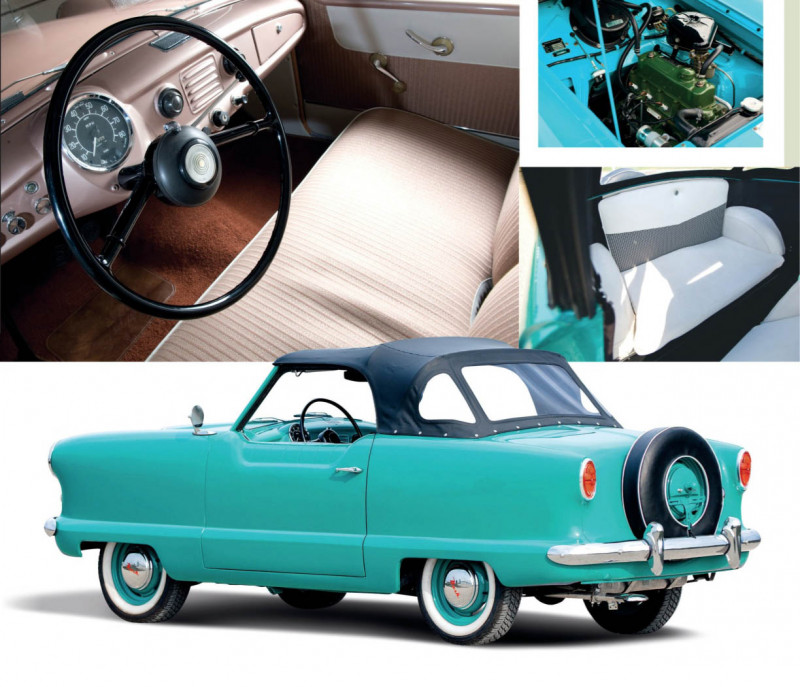1954 Nash Metropolitan
The vision of a fridge boss, built in the UK, but aimed as USA’s ‘second car’
Cool runnings
It’s strange today to look at the complete contrast between post-war motoring in Europe and that in the US. In beaten-down Britain and across the continent, frumpy small sedans and weird microcars ushered in the 1950s; as the decade progressed, they became smarter and better – not bigger.

In America, though, the 1950s introduced automatic transmissions, power steering, air conditioning, power windows and transistor radios. And increasingly colossal cars. George W. Mason had a different view. But then, as head of the Kelvinator refrigerator company, he would. In fact, Mason was a car guy to the core, having been right-hand man to Walter Chrysler in the 1920s before turning around the troubled Kelvinator through the Depression. In 1937, he presided over the mega-merger of Kelvinator with Nash Motors.
A landmark Nash model was the ‘600’ (1941), the US’s first mass-produced unitary body car. Its 1949 successor, the Airflyte, added dramatic aerodynamic styling.
Mason’s take was that America’s suburban spread and embrace of the automobile would create a market for a smaller, second family car and an even smaller, suburban runabout. He had bought and privately driven a number of European offerings when, in 1949, he had a sketch from independent designer Bill Flajole produced on a Fiat 500 Topolino chassis. The NXI (Nash Experimental International) prototype was sent on a national tour in 1950.
Public feedback was taken directly on board and when the production model (in convertible and hardtop) launched in March 1954, it was slightly longer, slightly less cartoonish and powered by an Austin 1.2-litre drivetrain. The new ‘Metropolitan’ – soon badged as both a Nash and a Hudson, after a May 1954 merger – was entirely built in Longbridge, England. Right-hook versions were sold in England and Australia.
Two surviving features of Flajole’s original sketch were the elbow-welcoming cutaway doors, and a bonnet line that was lower than the front guards, aiding forward vision. In 1956 came the ‘1500’, upgrading to Austin’s 1498cc B-series engine, with a snazzier two-tone paint. The following year it was badged simply Metropolitan and in 1959, it finally got a boot lid. Previously, the boot had been accessed via the rear seat.
In April 1961, production suddenly stopped. Compact car competition from the new Ford Falcon, Chrysler Valiant and the cult-creating Volkswagen had put the writing on the wall for a car that had always been too cute and quirky to be taken seriously.
LITTLE BRITON
BMC’s B-series four-cylinder engine had a cast iron block and cylinder head, with a simple three-bearing crank and pushrodoperated ohv. Launched in an 1197cc version, producing 29kW, the 1954 Metropolitan was one of its first applications. A 1489cc version, good for 39kW, followed in 1956. Both drove via a three-speed column-shift manual.
IN ITS SMALLS
Small car? At 3797mm in overall length, the Met is just 3mm shorter than a Skoda Fabia, albeit on much (300mm) shorter wheelbase of 2159mm. Kerb weight is 850kg, though the dual-bench cabin is sparse; a radio, heater were popular options. Only the passenger (right side) door has external lock, but no internal locking; the driver’s door can only be locked via the interior handle.
IN DETAIL
- 1956 1500’ MODEL INTRODUCED
- 94,986 EXPORTED TO THE UNITED STATES
- 1445 NEW PRICE (US DOLLAR)
- 22,209 BEST EVER SALES YEAR, 1959
- 04,377 TOTAL METS MADE


